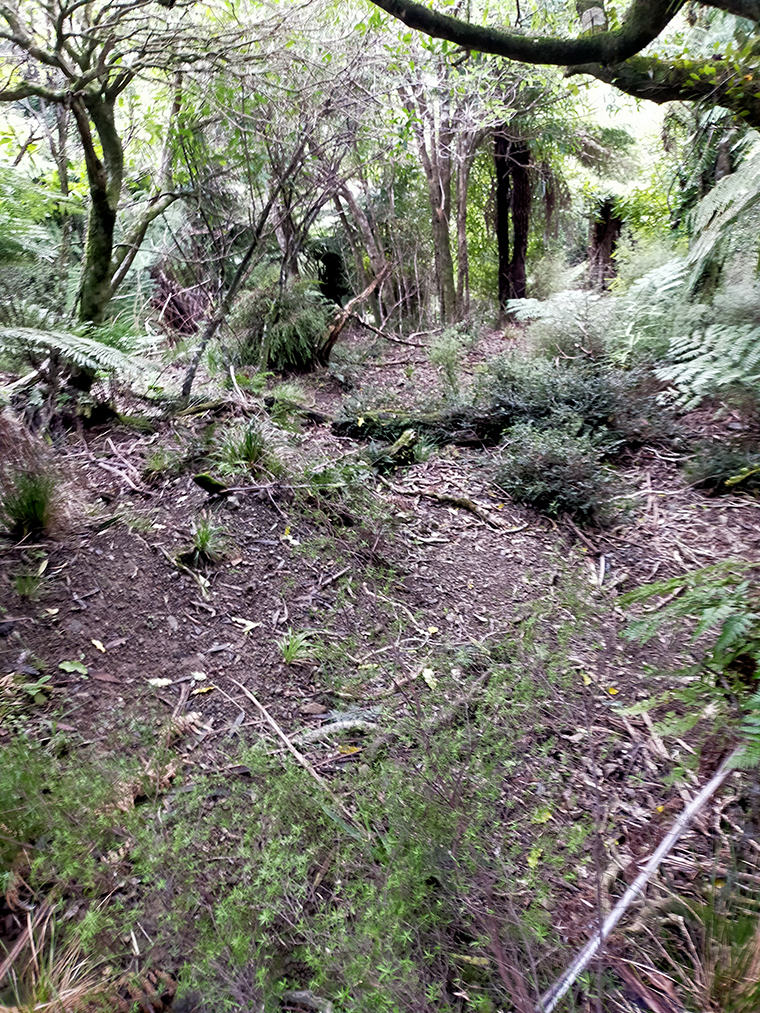In mid-July the Aorangi Restoration Trust arranged for Geoff Simmons and James Newman from the office of the Parliamentary Commissioner for the Environment (PCE) to present on the future of afforestation in NZ. Their compelling talk was based on their hallmark report “Alt-F Reset “Examining the drivers of forestry in New Zealand”.
The key messages we took from the talk were:
- The main driver of land use change today is the New Zealand Emissions Trading Scheme (ETS).
- Because of the ETS, planting pine forests for
carbon is considerably more profitable than establishing native forests so pines dominate new plantings today. - Allowing this unlimited offsetting to occur is risky. While the fossil fuel emissions will effectively remain in the atmosphere for centuries or more, we cannot guarantee the same for carbon stored in forests. These forests are increasingly at risk of being destroyed by fire storms or disease.
- Relying on forest offsets to meet our climate targets also delays reductions in gross emissions.
- As long as unlimited forest offsetting remains an option, the ETS itself will not incentivise people to reduce fossil fuel use.
- The PCE recommends removing forests from the emissions trading scheme and instead using revenue from the auction of carbon credits to fund appropriate afforestation on suitable land.
- Without a price on carbon, the overall economics of pine production in our hill country are similar to sheep and beef – it’s just that the distribution of jobs shifts to different communities.
- There is also the atmospheric legacy of all of the carbon released when we burned, harvested, and cleared many of our forests to create pastureland.
- Well situated and managed pine forests are not the problem. Our economy benefits significantly from our investment into radiata pine production forests. If we had put similar investment into the development of alternative species – including native NZ trees such as totara or rimu – we may have been able to achieve similar economic results.
- Other barriers to greater uptake of alternative types of forestry include issues with the building code and the Forests Act’s native tree harvest rules.
- The Government is also exploring the idea of privately funded “biodiversity credit”schemes through which businesses or individuals can support the creation or ongoing health of a native ecosystem.
- Some foresters are employing the novel approach of establishing an exotic forest for carbon credits and then managing its transition into a native forest.
From our point of view, it is wonderful that we have the 20,000-hectare Aorangi Forest Park to act as a carbon, biodiversity and water sink and to provide recreational opportunities on our doorstep.
But – this wonderful asset can degrade into a liability of we do not look after the health of the forest. Many parts of the Aorangi Forest remain seriously compromised by ungulate and possum browsing and are infested with introduced mammals that predate on our native flora and wildlife, already making many native species extinct from the Aorangi Forests.
The photo illustrates browsing damage near the old Te Manga Mill site Aorangi Forest Park. Not only does this forest damage compromise the carbon, biodiversity and water retention aspects of the forest, but runs the risk of the soil all disappearing out to sea in a major weather event, and then taking centuries to restore it.



